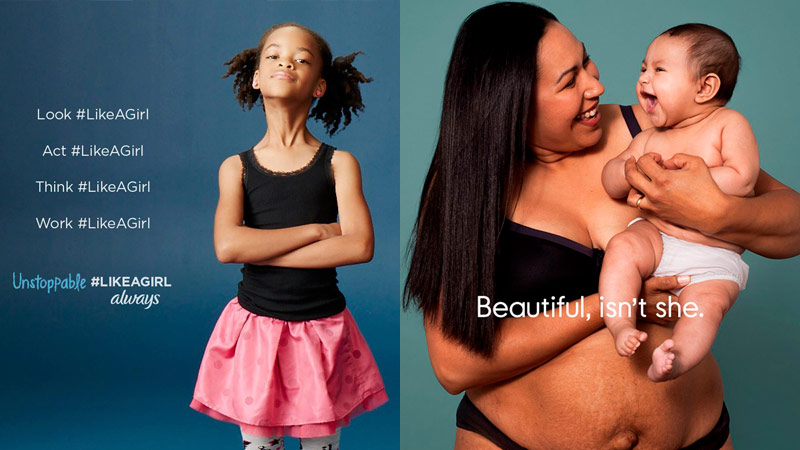Pace’s 2020 mid-year marketing report identifies six key trends that will soon define the marketing landscape. Among these six identified trends is Women Rising. Despite the representation of women in media making some remarkable strides over the last several years, there is still much work to be done. Two areas with respect to the representation of women in media stand out in our report, including the importance of both equal and realistic representation of women. Let’s dive deeper into what exactly these areas mean and how they can translate to opportunities for brand relevance.
BEING PRESENT IS THE FIRST STEP, BUT IT IS NOT ENOUGH.
A recent Google study in partnership with the Geena Davis Institute on Gender in Media at Mount Saint Mary’s University highlights the impact our exposure to ads has on societal values, particularly gender. After analyzing 2.7 million YouTube videos uploaded by advertisers between January 1, 2015, and March 31, 2019, in 51 markets, the Google study found that overall:
- Women-led and gender-balanced ads had 30% more views than other videos.
- Certain industries are doing better than others in creating gender-balanced content. For instance, female characters were seen most in retail (58%), consumer packaged goods (55%) and health care (52%) ads. They were least seen in automotive (28%), business and industrial (29%), as well as education and government (33%) ads.
- Male characters in ads tend to have more speaking time or are heard 1.5 times more than female characters. In those industries that create more gender-balanced content, the gap in speaking time is almost inexistent. Women have roughly the same speaking time in retail (54%), consumer packaged goods (52%) and health care (49%) ads. However, for those industries with already low representation of women in their ads, the gap in speaking time is significant. Women speak less than men in automotive (24%), business and industrial (21%), as well as education and government (26%) ads.
In all, the study found that despite an increase in the representation of women in advertisements, many of the same gendered stereotypes persist. The industries in which female characters are most seen and heard may be a perfect example of this. As society is craving more equal and accurate representations of women, simply having women characters in ads is not enough. Audiences are looking for equal, realistic and, therefore, intentional portrayals of women.
TELL IT LIKE IT IS.
The study also found that gender bias in advertising is further aggravated by age bias. For instance, most female characters in advertisements during the five-year period considered for the study were in their 20s and 30s, whereas the age of male characters varied widely. Females were also more likely to wear revealing clothing than males and be portrayed in the home, shopping and cleaning, whereas men were more often shown at work and in leadership positions. These portrayals of traditional gender roles clearly no longer reflect our new, more positive reality. Neither do they portray the complexities of life in a realistic manner despite there being proof that more realistic and inclusive content draws audiences in. For example, Frida Mom’s 2020 Oscars ad, which accurately and realistically depicted postpartum life for mothers, went viral despite being labeled “graphic” and banned by ABC. This example highlights audiences’ desire to see portrayals of their lives and narratives realistically, even when the subject matter is deeply personal or private, because it is nonetheless about a shared human experience.
The Google study shows there is still room for improvement when it comes to the representation of women in media as well as plenty of incentives to do so. Remember the 30% more views on YouTube for women-led and gender-balanced ads over other videos? Well, in case that was not convincing enough, Frida Mom’s banned 2020 ad received more than 1.5 million views on the brand’s YouTube channel in less than two days.
Despite each of the six identified trends being different from the others, there are some common themes among them, mainly the importance of inclusion, connection and community. For more information on the other five key trends that will define the marketing landscape, check out our white paper.



